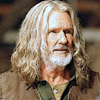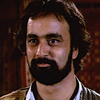 Faraway: Outlanders II (2009) Faraway: Outlanders II (2009)

Overview
What it is, where it came from, and what I was smoking at the time :)
As I stated on the Outlanders setting page, this campaign is an “indirect” sequel to the previous one. Our group was short on willing GMs at the time, and the current GM was reaching the limits of his endurance, so I decided to plunge in once again, behind the Big Screen. I decided to run this particular campaign, because I had quite a bit of background material already in place, it's predecessor was well-received, and the D&D elements would be easy to grasp by those new Players in the group who had not played GURPS before.
As with its predecessor, Season 1 of this campaign series features a group of modern PCs flung into a D&D-type fantasy world, with (to the extent that I could achieve it) a TV series feel, cinematic-yet-realistic, and a historically-accurate undertone. This one starts with a Lost-style plane crash, and has the PCs wandering around a creepy, swamp-island, along with a gaggle of other crash survivors all trying to reach safety, while being pursued by unseen creatures. Toward the middle of the season, they find themselves prisoners of a goblin army, and the ghostly Red Lady, only to be killed in a desperate escape attempt as the island's volcano erupts behind them. They wake to a medieval world to find that they have gained magical powers, are introduced to a wizard who takes them in as his retainers, and are soon entangled in a mission to defend a local village from invading sea-raiders, and at the same time, the encroachment of the goblin army, now forced to establish a foothold on the mainland after the destruction of their base on the isle. The campaign featured a 12-Episode season, intended to be followed by five more, and the possibility of a spinoff or two later.
For prospective GMs, this campaign would be an easy fit for the GURPS Banestorm setting, and the general plot and players involved is simple enough to be easily converted to other settings as well.
Dramatis Personæ
Who played who, who they met there, and who tried to kill them
- James “Awesome” Wesson
(Award WinnerT Phil Norfleet)
- U.S. Army Ranger, field-medic. Former quarterback for the Oregon State Beavers. Based heavily on the “Awesome” character from the TV series, Chuck. Hero (#2 Lancer).
- Adam Smith (Mike McNurlen)
- Self-employed repo-man. Former wide-receiver for the Oregon State Beavers. Based, in large part, on the Sawyer character from the TV series, Lost. Lancer (#2 Hero).
- Aaron Colt (Aaron Albrecht)
- “Professional student” and mixed-martial-arts fighter. Former half-back for the Oregon State Beavers. Based loosely on the Player's self. Big Guy (#2 Heart).
- Samuel Remington (Josh Freeman)
- Geek Squad computer service tech at Best Buy. Former third-string place-kicker for the Oregon State Beavers. Based heavily on the main character from the TV series, Chuck. Smart Guy.
- J.W. Barrett (Chris Smith)
- Assistant football coach, and former offensive lineman for the Oregon State Beavers. Not really based on anyone in particular. Heart (#2 Big Guy).
|





|
- Other Survivors of Northwest Flight 1138:
- Dr. Web(ster) Griles (Richard T Jones, Ref:Sarah Connor Chronicles); squared-away ex-trauma surgeon turned FEMA disaster coordinator, headed to Stuttgart to deliver a lecture on disaster preparedness to some German officials.
- Gary Sabrosky (Michael Emerson, Ref:Lost); slimy Associated Press reporter, on his way to the Mid-East to cover the war.
- Bill Decker (Kris Kristoffersen, Ref:Blade); sarcastic redneck trucker and outdoorsman, on his way to Paris to stop his daughter from dropping out of art school and running off with “some French bastard.”
- Captain Dawna Harding (Jada Pinkett Smith, Ref:“Captain”-Pitch Black); U.S Army MP officer, on leave, headed to recover her boyfriend, who PCSed to Germany after being deceived by her ex.
- Celia Strong (Amy Acker, Ref:Dollhouse); computer programmer/analyst and MMO-geek, sent to Germany by her company to recover some lost data from one of their subsidiaries.
- Jack Knotts (Giovanni Ribisi, Ref:“Engineer”-Galaxy Quest); slacker/musician on his way to Amsterdam to get legally stoned.
- William Weiss (Willie Garson, Ref:Stargate SG-1); clueless historical research writer, medieval history expert, writer of a “controversial” historical-fiction novel, Desert Wind (that has, predictably, attracted the attention (e.g. death threats) of the radical Muslim community), on his way to a book-signing event in Amsterdam.
- Kareem McKnight (Tyrese Gibson, Ref:Death Race); gang-thug with a chip on his shoulder, wannabe football player, suffering from a heroin addiction.
- Tina Rich (Alicia Silverstone); AKA Duong Thi Tinh, resentful and embarrassed of being adopted by a poor Vietnamese couple, attempting to marry into wealth, but her fiancée is killed in the crash (more upset by her setback than his death).
- Ahmed Hassan (Art Malik, Ref:True Lies); “engineering student,” impressed into Muslim terrorist service by his overbearing, zealot father, and suffering from an over-developed (for the job) conscience.
|










|
- The Mithrites:
- Ecgwynn, Sergeant of the Mithrite Order (Katie Sackhoff, Ref:BSG); scrappy daughter of a prominent soldier, gone mercenary after not being allowed into the Shields, and disowned by her family.
- Žorkell, Man-at-Arms of the Mithrite Order (Brad Beyer, Ref:Jericho); stereotypical grim warrior, accused of murdering his wife in a berserkir fit.
- Rægnald, Man-at-Arms of the Mithrite Order (Mark Sheppard, Ref:Firefly); royal heir to a neighboring land, usurped and betrayed by his uncle, and thought killed.
- Scarra, Magister of the Mithrite Order (Elizabeth Mitchell, Ref:Lost); secret priestess to pagan gods.
- His Honor, Sir Weland, Knight-Magister of the Mithrite Order (David Thewlis, Ref:Kingdom of Heaven); venerable, noble knight-wizard, “employer” of the PCs, and secret agent of the Black Wizard.
- Juliana (Summer Glau, Ref:Firefly); daughter of a displaced English woman from the WWII-era, English-speaking late addition to the team, rescued from “justice” at the hands of a Church inquisitor.
|






|
Execution
What I planned to do, and how I planned to do it
I planned to stick to a more “cinematic” feel, as I had with the previous iteration, though perhaps to a more literal extent, having been introduced to TVTropes.org. The pacing and structure of the series, the season, and the individual episodes was based on the “standard” Hollywood template. I took a Player poll on the Message Boards regarding the overall “theme” of the campaign, and what existing show it should most resemble; the (rather weak) consensus was Farscape; the latter half of the season, and future material, would be created with that consensus in mind (and in fact, some elements were thinly-disguised ripoffs of that show).
I had the Players design their Characters together, as a group, so that they would all work together and mesh well from the start, by design, using the cinematic trope of the “Five Man Band” as a basis for the Characters' roles in the group. After taking a Player vote on whether to keep the “surprise,” it was determined that the Players would rather know the nature of the campaign, allowing them to create Characters that would not be hampered by inappropriate Traits (a situation I have had bad experiences with in the past). I required the Characters to make use of existing occupational Templates, plus an additional 25 CP, rather than a typical “balanced” point level; minimum 100 points (later raised to 120). The only background element that I required was that the Characters would be on the same flight out of Seattle, headed for Amsterdam (and possibly beyond). The ultimate makeup of the group, backgrounds, and overall tone, was determined by the Players-the Players came up with the college football angle, their playing of D&D together at college, their trip to Amsterdam for their NFL buddy's wedding/bachelor party, and the “gun” names. Considering the group's final makeup, I modified my plans slightly to allow for a bit more “football” stuff in the game.
As usual, there were quite a few experiments and tweaks involved in this campaign:
- This campaign was the first “fully” 4e game. As such, it was also the first to feature elements from GURPS Action 2: Exploits and GURPS Mass Combat. I wanted to do a test-run of some of the new rules elements before we started the campaign, to see whether I wanted to make use of them during the campaign or not. Rather than just fudge a battle or whatnot, I decided to “work it into the background,” resulting in the Episode 100 football game (and my Mass Combat: Football mechanics). Alas, that GURPS Low-Tech had not yet been released when this game occurred!-Season 2 will wait until it is released.
- I purchased a gavel (~$20) from a local trophy store, and used it throughout the run. I used it to announce the beginning and end of the session, and to mark combat/action rounds. At the first session, I wore my black graduation robe to complete the look-alas, it was too hot to wear regularly. ;D
- 12 Episodes was going to be a stretch of my abilities-up to this point, my longest run was eight sessions. My saving grace was that I borrowed from my experience with Underground, and intended to develop each Episode only within the week before running it, with only some very basic, structural preparation before that week-any lack of “quality writing” was to be lampshaded by the fact that this is, as I put it, a “crappy TV series.” In addition, I attempted a more “minimalist” approach to my session notes, in an attempt to cultivate my usually-lacking improvisation abilities, and reduce the overall workload of creating a campaign from scratch.
- To assist the TV-series feel, I started off each Episode with, “Previously, on Faraway.,” and went round the table twice, having each Player quickly recount a scene from the previous episodes up to the current point. Later in the series, I realized I needed a “Next week on.” bit also, where I would give a teaser of what was to come.
- This was my first run using “Wildcards”-elements that would contain some unknown factors to be determined on-the-fly during the game under certain pre-determined conditions. One of my ultimate GMing goals is to find a workable system that would allow me to run a game where I do not know what the end will look like, and this was a next step in that process.
- I wrote up a pre-crash story prologue, the PCs' memory of what happened, and “blacked out” all but the first hundred words. The blacked-out story, posted on the Message Boards, would be revealed a hundred words or so at a time after each Episode, until their memory was complete. I calculated it so that total recall would be achieved at the season finale. As this was also the memory of the other crash survivors, the gradual revelation of the pre-crash story was to be a Wilcard element, affecting the NPCs' reactions to each other.
- I was introduced to this article later in the production process, and tried to incorporate elements of it-this turned out to be more difficult than it seemed on the surface, as I would have to fight my GMing reflex-responses.
- With the game being played at my workplace, with access to a large TV/monitor, this campaign featured greater “graphical” content than was previously possible. I used PowerPoint throughout; extensive use was made of photo-manipulations as illustrations, and in a few cases, YouTube video clips.
- I developed the “Village Model” to handle large NPC groups; it debuted in this campaign, to a somewhat-limited extent.
- There were, as usual, a number of refinements, both to the Outlanders background material and many of my House Rules; in specific, my D&D Magic conversion and my Immortal: The Gathering rules were updated to GURPS 4e standards, and improved considerably. This would also be the first live playtest for some of these elements. In addition to the usual House Rules in use, I ruled that “combat usage” of techniques defaulting from Sports (Football) would not be subject to the listed -3 penalty. I wanted to encourage the use of the Sports (Football) Skill as often as it would make sense.
- There's a running gag in the game where I have the wizard essentially quoting Star Wars lines about the Force when referring to magic (as “The Source”). There's actually more to it than that, though it hasn't been revealed yet.
- There have been continual difficulties in getting all the Players (at the time) to fully participate in the between-session campaign activities on the Message Boards. Recognizing this, I tried to limit the amount of such participation I would require.
- Chris, a new Player to the group at the time, had a work schedule that would cause him to miss quite a few sessions. I decided to create his character as an NPC that he would play whenever he was present. I gave the character Traits that would allow me to use him to “guide” the group (that is, to get them into appropriate trouble, get captured, etc.), and I didn't give Chris any normal CP awards at the end of a session when he was present, but upgraded the character as I saw fit, with his input.
Synopsis and Extras
Where the Players went, who they saw, and what they conquered
Additional Content:
Before the start of my upcoming campaign, I decided to do a test-run of some of the new rules, specifically in this case, Mass Combat. Rather than throw the PCs in the middle of an arbitrary Braveheart dream-sequence, I decided to work with the characters, all football players, and do a football game. The PCs had played for Oregon State University in their background, so that's where I started. A little research led me to one of their biggest rivals being Oregon U, in a matchup referred to as “Civil War”-perfect.
The Chase:
There is a long-standing, generally good-natured rivalry between the two universities, referred to as Civil War-a big deal, locally. Sometimes the events are taken seriously enough that one side or the other might resort to “espionage” activities to get an advantage. In this case, a number of OU students hatched a plan to photograph the OSU coaches' battle-plans. The PCs, out carousing or whatnot, were quietly warned of the theft attempt, and they decided to investigate. They arrive just in time to see a number of thieves at the Valley Football Center, dressed as ninjas, leaving the scene. The groups spot each other, and a chase ensues.
I used the chase rules from GURPS Action 2: Exploits, pretty much as written. The “bad guys” were parkour-types, and pulled a lot of stunts, leaping and tumbling through Reser Stadium, for which I had collected quite a few interior and exterior photographs, as well as some satellite photos and a campus map, all of which were used as visual references-I had a basic route traced out for them. Their goal was to reach their black van, tucked away in the parking lot of the nearby aquatic research building. The PCs put up a good fight, and managed to take them down before they got halfway through my planned course, and saved the game.
Mass Combat: Football:
Setup:
For the Beavers, there was a PC at the QB, Half-Back, Wide-Receiver, and Place-Kicker positions-all offense. I let the Players collaborate to handle their team's “coach.” Rules as played:
- PCs were the home team, and got a +1 DB for “home-field advantage.”
- Considered a pitched battle. I started both teams at -10% Casualties.
- Troop Strength Ratio was (arbitrarily) 1:1-no need for complexity, in this case.
- I did a starting coin-toss. Winner got PB+1.
- PB represented “momentum” in the game.
- Casualties represented “morale and fatigue,” and could not actually drop to 0% (for obvious reasons; the game isn't over till it's over). Also, retreat strategies were unavailable.
- 2 mass-combat rounds per game-quarter. (Originally, I wanted to alternate between offense and defense, so the PCs had to “sit out” while their defense took to the field.)
- Risk and Significant Actions were treated as normal.
- Game-score per round was figured at 1 x Margin of Victory (to winner) ±1 x Strategy check results (thereby, even the loser could still get some points in a round). Point total for the round was broken up “logically,” and excess carried over to the next round.
- The Strategy check results (nevermind the Margin of Victory) was also how I decided how well the game was being played for the round, and would have determined penalties and such.
- I gave the opposing team a single Misfortune check per round, to determine an overall “injury” situation, meaning a percentage of the casualties would be actual injuries.
- I let the teams recover half of the total casualties taken after half-time.
The Results:
The OU Ducks won the coin-toss, and started with the momentum, but it didn't avail them much. The OSU Beavers opened up with a risky attack strategy, while the OU Ducks, to their eternal shame, went all-out, suffering 50% casualties when losing the first round. The Ducks spent the remainder of the game on full defense. PCs used trick plays (Indirect Attack strategy), and regularly succeeded at their Significant Action attempts; special-teams rules the night. At the end of the first quarter, the score was 31-0 Beavers, and at the end of the first half, the Ducks were beaten down to 0% of their force. I ended the game for RL-time purposes at the end of the third quarter; the score at that point was 60-17 in the PCs' favor. Historically, the 2004 Civil War game being modeled here went similarly. Overall, it took a little longer than I'd like, but that was chiefly because we were all new to the rules (as it progressed, it did get much smoother).
Afterword:
- In a continuing campaign situation, I would've given more thought to the Troop Strength. My best thought on the matter, at this point, is to consider each football “position” as an individual element, and TS would represent not only the starter's abilities, but also “depth” at that position. This would give each side ~22-24 elements (*including kickers). There would be offensive, defensive, and special-teams “superiority”-maybe more detail, if you wanted to go that far. I also would have given the opposing team a “Hero” or two, with the opportunity for some Significant Actions.
- Successes: PB as “momentum” worked well for the “simulation.” Significant Actions was fun, with the PCs giving good descriptions of their actions (and pulling them off with alarming regularity).
- Up to the point that I ran the game, it didn't occur to me that Significant Actions and/or Misfortune checks were not “skill-based.” I had wanted the skill-check to represent how well they played in that instance. In retrospect, I would have one or the other (or both) be a “dual-purpose” roll, so the SigAct/MisFor target would determine those results, while the same roll's result versus their appropriate skill could determine their performance (which would then be used to determine yardage, penalties, and the like).
- The combination of scoring and casualties made the 2-rounds-per-quarter a bit too much. I'd probably drop it to 1-per-quarter in a future attempt, unless I really wanted to drag it all out, in which case points and casualties would need to be moderated.
- In a more-detailed game, or one where PCs were on offense and defense, I would've gone with the offense/defense swap as I had originally intended-I think it would've worked well.
- Casualties in the game were way too high, and tended to be rather devastating. I think it fit the situation well enough, but it happened too quickly. In retrospect, they probably should've been moderated somewhat-halved maybe?
Prologue: Last Thing You Remember.:
Written from a “generic” Players' perspective.
12 February 2010, 10:32PM
You arrived at the airport about twenty minutes later than you had planned, which put you in a rush from the start. Adam said something he shouldn't have while going through the security checkpoint, and got pulled aside for a full check, which delayed everyone even more. All in all, you had about five minutes to sit before the call to board. The plane was packed-hardly any seats open, with the exception of the first-class section which, oddly, had several seats open.
You found your seating assignments, all on the same row, stowed your baggage, and took your seat. You immediately regretted not having gotten an upgrade to first class. The plane got underway in due time, taxied to position, and took off without incident. The flight was to take around ten hours, so you prepared for a long, hard day of sitting uncomfortably. Jack, seated nearby, was mostly unresponsive to your attempts at being friendly, lost in his ipod.
An hour or so into the flight, as the plane reached cruise altitude and the seat-belt sign was unlit, you looked up to see an unremarkable man in a black suit standing in the first-class doorway, speaking with a flight attendant and pointing in your general direction. The stewardess then approached you and explained that the man to whom she was speaking was offering you an upgrade to first class, owing to the absence of his friends who had apparently missed the flight. You agreed, and eagerly moved to the first-class section. As you settled into your new surroundings, you saw a few of the Survivors there with you, minding their respective businesses. As you sat next to her, you witnessed Tina rolling her eyes, irritated at the intrusion of her solitude.
The man in the black suit introduced himself as David; a well-to-do businessman looking to expand into foreign markets. It became immediately apparent why he chose you to join him in first-class, in that he had recognized you from college football (and deduced that all of you were “together” on the flight); he engaged you in pleasant conversation for some time about sports, college, and life in general. As the discussion continued, Weiss joined in, and it eventually turned to politics-sparked by the in-flight movie that was showing at the time, and revelation of your respective military service. You drifted out of the conversation, for the most part, but recognized Weiss' name from recent news reports as the guy who had written a novel about the early years of Muhammad which the Islamic world considered blasphemous. He was on his way to a conference in Amsterdam, and was laughing about some death-threats he had received days prior, believing himself to be “too insignificant” to justify that sort of thing. It was around that time that you noticed, though he hadn't, that Ahmed had been watching him, trying to look like he wasn't. Your attempt to bring it to his attention was interrupted by a commotion from the back of the plane.
As there had been a number of airline crew moving back and forth in the minutes prior-a shift change, perhaps?-you hadn't noticed that a number of passengers had also moved forward, and that they were all of Middle-Eastern descent. The commotion came as the air-marshall, who had become suspicious of this activity, tried to intervene-but too late, as the terrorists forced their way into the cockpit. The plane erupted into panicked screaming, cowered whimpering, muffled praying, Arabic shouting, and weapon brandishing. Ahmed, who had been sitting some feet away the whole time was pointing the knife at you, hate an determination in his eyes as he cursed under his breath and stared at Weiss, obviously bent on martyrdom and sacrificing everyone who happened to be on the plane with him. Sabrosky attempted to verbally manipulate Ahmed into giving up on his mission, for which he was punished by a slashing blade, causing him to cower and remain silent.
Instigated (in part) by Cpt. Harding, the passengers on the plane rose up against their attackers and overpowered them, resolved to stop the hijackers or die trying; you were at the forefront of the action, and Ahmed was your first target. You witness KMcNight beating one hijacker senseless with his fists and feet, while Decker held him down. Amidst the scuffle, the plane dove sharply as the crew and terrorists fought for control, and the cabin was thrown into a semi-weightless state for a long beat, adding to the chaos of the moment. The subsequent fight ended, with shots fired, windows broken, oxygen masks deployed and dangling, many injured passengers, a few dead, and the plane itself in an uncontrolled dive, but recovering. Aaron's arm was severely cut by Ahmed in the fighting. All but a couple of the terrorists were unconscious or dead; Ahmed was among the living. The overall prognosis was good, by all accounts. Awesome tended and bandaged Aaron's wounded arm.
RBlackwell, the remaining pilot continued the struggle to regain control of the plane, with help from a knowledgeable passenger or two, as those who could tended the wounded, organized by Dr. Web(ster) Griles and Awesome. By this point, all of the Survivors were in first-class as well, the remainder having migrated to the front during the chaos. You witnessed Celia comforting a dying old woman. You realized in the aftermath that David was missing-no one had seen him leave the first-class section. Some minutes later, the pilot announced over the PA that the plane was out of danger, that they were attempting to find a place to land, and that everyone should return to their seats and fasten themselves in. You overheard some conversation indicating that you were over the North Pole, hours from any suitable airstrip-and all that with a freak storm popping up. A beat later, the pilot announced that you would be flying into a storm, that he was trying to get around it, and that he apologized for the continued inconvenience and discomfort. He was doing everything he could to bring the plane down safely.
The next thirty minutes or so were tense, bumpy and loud, with thunder crashing, and wind rushing through the broken windows, tossing around anything that wasn't tied down. From the front, you were in a better position to see the concern and frustration on the faces of the remaining crew, and overheard poorly-disguised conversations about the lack of radio reception. You witnessed Jack having nodded off in a first-class seat, oblivious to the chaos. A scream rang out from the midsection; someone said they saw a large shape outside, silhouetted by a lightning strike, on an apparent collision course with the plane. In the next few seconds, you all strained at the windows to get a look, as the plane banked hard. You did manage see an indefinable shape outside, in the split-second before the plane lurched heavily from impact and engine explosion, the flames briefly illuminating what registered in your mind as a large ”flying creature” of some kind. Whatever it was, it took an engine and a large chunk of wing with it.
The plane lost power, the only light remaining in the cabin coming from the flames outside. The descent seemed to last an eternity. The plane rolled over twice, at least, before it started to break apart. As the fuselage began to separate, the noise became deafening. Luggage and passengers were tossed around and sucked out in all directions. There was an explosion, and the first-class section you were in jolted forward, striking ground a beat later, skipping a number of times, and tumbling, until a hard collision instantly stopped it cold, throwing everything and everyone that could be high into the air.
Season 1:
The PCs awoke in the middle of a swampland-hot, muggy, and raining, in dramatic contradiction to their expectations (the flight was to travel over the Arctic Circle)-to find themselves having apparently been ejected from the crash of their plane, with no memory of what happened. As they came to, in turn, they rescued each other from their respective circumstances: Aaron and Sam found themselves in a 3-seat section, precariously balanced in a broken tree ~10ft off the ground; they found Awesome hanging upside-down, with his seatbelt wrapped around his leg, his seat caught high in a tree; they then found Adam strapped into his seat, face-down in a puddle, and sinking. Next, they found J.W. pinned by a heavy tree-limb. Once freed, they surveyed their wounds, and noticed that Aaron's arm-wound had already been bandaged, and upon checking, decided it had most-likely been caused by a blade, and not the crash. As they approached the crash-site and started combing through the wreckage, they encountered a number of other survivors:
- McKnight, who snubbed their attempts to check up on him, as he dug through the wreckage for ”his stuff.”
- Celia, calling for help as she held Jack, in respiratory arrest; Awesome performed CPR and revived him, to which he responded, “That was a hell of a thing.”
- Sabrosky, wandering while wearing a deployed life-jacket & going through the pockets, and trying to get cell-phone reception.
- Tina cradling her dead fiancée and crying uncontrollably, muttering “What am I gonna do now?” (Some time after PCs had moved on, they were interrupted, as she was being pulled away, having started kicking and cursing at the deceased fiancée for leaving her without life insurance.)
- Dr. Griles, wandering in a daze, suffering from a mild concussion and shock.
- Weiss, pinned under some wreckage, whom Sam recognized as a well-known hitorical-research writer, recently in the news regarding Muslim death-threats against him for having published a ”blasphemous” fictional novel about a ”young Muhammad, in love.”
- Ahmed, wandering and muttering, clearly beside himself.
- Decker, carrying Cpt. Harding, who had twisted her ankle.
- Robert Blackwell, one of the crew, mortally impaled through the chest by a large wooden splinter-only lasted a few minutes, and revealed no clues about the crash; Awesome did what he could for him.
The rain slacked a bit. Cpt. Harding was trying to get everyone organized, and ran afoul of McKnight, as she tried to dissuade him from stealing a dead man's watch; Adam intervened, and ended up sucker-punching him, just as J.W. approached-the situation was defused (or deferred, at least). The scuffle caused Dr. Griles to snap out of his stupor, and he got everyone's attention, to address them. He explained that he was a FEMA disaster coordinator with experience with this type of situation, that he believed they were far enough off-course that a timely (if any) rescue was unlikely, and that they all needed to work together to survive. He set everyone to work; Sam was sent to the cockpit to get a radio working, the strongest set to moving bodies and large debris, while the rest were to comb the wreckage looking for things they could all use to survive. During the process, the PCs managed to find some of their carry-on luggage. After a survey of the damage, it was agreed that the wreckage was incomplete, and the group should move to find the rest of the plane in hopes that there might be other survivors and gear. They gathered what they had found thus far, and moved out.
As they traveled a short way, they found that they needed to cross a submerged part of the swamp, about waist-deep, after deciding against any extraneous effort in trying to avoid it. The traverse went well-enough, with a few slips; Decker, an outdoorsman, was of great assistance to all during the crossing, guiding them down the safest path; Weiss lost his glasses in a fall, and while helping search for them, Sam discovered a small puzzle-box, which he kept to himself; Aaron endeared himself somewhat to Cpt. Harding when he caught her, saving her from a fall; Tina, who had refused, earlier, to replace her high-heeled shoes with something more appropriate (taken from the deceased), ended up crossing barefoot; Adam took a fall, wiping out his cellphone and soaking his cigarettes. As Dr. Griles climbed out the other side, ahead of the group, he ran afoul of a cleverly-hidden man-trap; his upper-leg was pierced through by a foot-long wooden spike-the wound had hit bone, and was thought too dangerously close to his femoral artery to permit removing the spike from his leg. With much agony, the spike had to be cut from the trap, using some scrounged scrap-metal. Decker inspected the trap and disabled it, saying that he believed it was not meant for an animal. A crude stretcher was improvised out of on-hand materials, and after immobilizing the spike in his leg, Dr. Griles was carried along.
The rain had slacked to a light drizzle. The survivors came across a large clearing full of crash debris. It was guessed that there was likely an explosion, and the plane had disintegrated and burned on the way down. Everyone that could set about combing the wreckage, and came up with a few useful items; the PCs managed to recover some of their checked luggage, mostly smashed and/or burned, but some still usable. No survivors were found, but as Decker searched around the site, he discovered some relatively fresh tracks, having approached the site and left-shod, believed to be more survivors, coming from the missing tail section (they counted only two engines amongst the present debris, and so were missing the third). Jack was found to be missing. After the man-trap, many feared the worst. Aaron, Adam and Decker set out to find him, Decker finding and following his tracks. Decker's Amerindian superstitions were revealed when he admitted having a ”very bad feeling” about this place. The search party was surprised by a small boar darting from out of the treeline, and they wondered what it might be running from. They found Jack sitting against a tree (apparently having come to answer the call of nature), staring blankly ahead and unresponsive, frozen in uncharacteristic fear. He had seen something he could not describe, except to say that it was no pig, though the search party convinced him otherwise. He got a good tongue-lashing from the others for running off.
Having found some survival gear, the group moved out in the expected direction of the tail-section, hoping to catch up to the other survivors. As they traveled the short distance, and the sun lowered ever closer to evening, the drizzle gave way to a deep fog. They found the tail, mostly-intact, with tracks all around. Through the fog, they saw a glow a short distance away, and moved to inspect it, expecting to find some signs of civilization. What they discovered was a strange lighthouse of some sort, very old and crumbled, with evidence it had been clipped by the falling tail-section. Weiss could not determine its origin, except to say that it looked ”centuries” old. Without warning, the group was beset by a large number of creatures, giant rats the size of medium dogs, emaciated and ”unnatural” looking, and apparently out for blood. The group defended itself, PCs doing the lion's share of the damage. As another wave of the creatures revealed itself, a great roar was heard from further into the swamp, and the rats scattered (as did the group, momentarily).
Dr. Griles, being essentially helpless, had been attacked by the rats, his wound torn open; Awesome did what he could, but Dr. Griles bled out too quickly, and expired. Decker took charge of the group, and declared that they needed to reach higher ground, further inland-which would take them closer to the ”roar” they had heard. They would follow the remains of a road, which should lead them to some sort of civilization, but would take them through a dark tunnel through the nearby ridgeline. There was much heated debate about whether this was the correct course of action, but the argument was interrupted by another roar, this time much closer. The group panicked and scattered in all directions, the PCs trying to keep them together. Some time later, they regrouped-and discovered that Aaron was missing.
A cry of ”Found another one!” rang out from the darkness. The group had proceeded into the road-tunnel, following a sparse trail of fallen airline liquor bottles, presumed to be the direction of the missing Aaron. Dr. Griles' body had been wrapped in trash-bags from the survival kit and carried along on the makeshift stretcher by Awesome and Adam, who had insisted his body be laid to rest in a more secure location. As the group cleared the thankfully-brief tunnel, they saw the orange glow and long shadows of the sunset, signaling the last of the daylight. They found themselves on a weathered and ruined road, leading up, canyon walls to either side. From the group, there were murmurings about charging into certain danger, concerns expressed regarding memories of a terrorist hijacking of their flight and Ahmed's intentions, and discovery of McKnight's apparent drug withdrawal symptoms.
Darkness fell. The group rested for a few minutes at some sort of ”gatehouse”; tall stone walls, overgrown with ivy and tree roots, bounded by the canyon, with a heavy stone door that would move for no man. Awesome took the opportunity to patch up the group's injuries, and took a few moments to have Dr. Griles' body covered with stones, as they would not be able to take him over the wall with them. Signs of their quarry were also found in the area, at the base of the wall. Adam nimbly climbed up to scout ahead, using the tree-roots, and descended the other side after he had given the all-clear. The group followed thereafter, without incident. Sabrosky was overheard by Sam to be plotting against Ahmed, prodding McKnight to ”deal with him before he stabs us all in the back.” Some distance further, they encountered a broken bridge across a small river, and decided to use a nearby, large fallen tree to cross. Adam gave Sabrosky a bit of a hard time, trying to force him to cross first, but Awesome wouldn't wait. Decker crossed next, and as the others were making their way, he confided in Awesome that a distant dead tree, silhouetted by distant lightning, forked in two, was forked in three only moments ago-they were being watched. As he observed the dead tree, Awesome spotted some sort of tower in the distance, which Decker identified as the highest point, and their destination. Midway through the crossing, rain began to fall anew; the rest of the group crossed more cautiously, given the increased difficulty, and continued without incident.
The rain persisted, and the lightning began to increase in frequency. As the group continued upward on the road, alongside the stream, they were interrupted by a scuffle; without warning, McKnight had begun beating and attempting to drown Ahmed. The PCs, with help from some of the others, managed to pull him off, some elbows and fists being employed to discourage resistance. McKnight had apparently taken Sabrosky's words to heart. He was disarmed, his hands zip-tied together, and J.W. appointed his temporary warden. Ahmed was injured and frustrated, but cooperative; having been deferred to, for her law-enforcement background, Cpt. Harding declared him officially not at fault.
The group continued until the road crested, overlooking an ancient, ruined city of undeterminable origin, sitting astride a small lake, backlit by lightning strikes. Decker showed that the trail continued down into the city, and pointed out a very large footprint. They continued onward, and their path led them through a ”garden” area, sloping steeply downward toward the city, with myriad steps and columns, overgrown with plant life and weathered with age. As they descended, a cry was heard to the side; Awesome and Adam investigated, but they saw only ”cat's eyes” and a large man-like shadow that moved quickly away as they approached. A beat later, J.W. was struck by the staff-like weapon of a large creature, only a shadow in the darkness and rain; the blow sent him flying, and the shadow moved quickly away. Awesome tried to keep the group from panicking, and as the PCs were tending to their unconscious comrade, Decker was snagged by the neck and dragged into the darkness by the rope of a hidden assailant. The group, barely held together by Awesome's leadership, with assistance from Cpt. Harding, quickly descended the garden path and found themselves in a ruined coliseum. They ran across the pathway over the pits to investigate an agonized scream, to find Decker hanging by his feet, a large chunk of flesh torn from his leg, accompanied by the skinless bodies of a few other unidentified individuals. As they started to cut him down, the platform collapsed, depositing the group in the pit area. They looked up to see the silhouetted creature run Decker through with a spear, and slip away, ”purring.” Awesome tried to maintain order as the group scrambled for a way out of the pit, while the creature assaulted them from atop the crumbling walls, snaring one or two and knocking walls down. Sabrosky was taken, and the creature spirited away with him. The group discovered that a hole had been knocked through the outer wall, just big enough to squeeze everyone through, and they escaped.
They ran for the most defensible-looking location nearby, an enormous cathedral-like hall across a bridge. They entered quickly, and pooled their strength to close the heavy doors behind them. Inside, sheltered from the rain and shrouded in darkness, they discovered what they believed to be the creature's lair, littered with bones and assorted junk, along with some treasure, on and around what might have been a throne, long ago. Lightning strikes echoed through the massive chamber. They picked through the refuse, finding a few items to defend themselves with, along with a number of coils of dark, strong rope. They investigated the startled cry of Sabrosky, suspended by his feet at the other end of the chamber, and as they attempted to cut down their suspended associate, they were surprised by the creature as it dropped from above into their midst. The monstrous creature impaled Weiss upon it's spear, lifted him off the ground, and flung him to the floor. While most of the survivors fled, the PCs stood their ground, pursuing the monster with flashlights, stabbing and slashing, but the creature was swift and tough, and seemed to shrug off the wounds. When the monster first struck, Sam had retrieved the flare-gun from the survival pack that J.W. was holding, and he fired it into the air, bathing the chamber in reddish light. Adam, known for being the better shot with a pistol, took the reloaded flare-gun from Sam and aimed it at the creature, who roared threateningly as he prepared to charge them. Adam's aim was true, and he struck the creature in the eye with the magnesium flare, burning it horribly. The monster screamed in fright and pain, and crashed through a large window, into the lake.
The monster gone, temporarily at least, the PCs discovered Aaron, trapped in a watery pit by the creature for some unknown purpose; they also released Sabrosky from his bonds. They thought to rest there, and gather their strength, but realized that many of their fellow survivors had fled during the fight, and were nowhere to be found. They heard the monster howl in the distance, reminding them that he yet lived.
The the survivor group was moving quickly through the darkened streets of the ruined city, both pursuing their scattered comrades and fleeing the pained howls of the (temporarily) defeated monster. Through the wind and rain of the continuing storm, they detected the sound of ”children” in the distance, toward the gate leading out of the city.
They found Jack, hanging by his fingers from the pillar he had apparently climbed to escape a small pack of hyena-like creatures, whose eery voices the group had mistaken. The others close behind, Awesome and Aaron charged the dog-creatures, screaming and kicking, sending them all running. Jack was helped down, and revealed that he had gotten distracted by a cloaked figure in the distance, and was ambushed when he went to investigate. A little further out of the gate, the group encountered Celia, cornered in a ruined building by a single, much larger specimen of the previously-encountered hyena-creatures (this one, about the size of a small pony). The group charged the creature from a blind-spot, surrounded it, and felled it amidst much stabbing and kicking. As they reached to pull Celia from her hiding place, another of the creatures emerged from around a corner, bristling at the group, as if deciding whether to attack-when Ahmed charged out of nowhere and grappled the beast. The PCs swooped in to aid him, and drove the creature away to lick its wounds. Celia explained that she had lagged behind the others, but was likewise distracted by the sight of a cloaked figure in the distance. Ahmed had backtracked to catch her up, and left the other two group members headed up the cliff-road to the tower, as had been previously determined.
The reconstituted group then headed up the road, and as they reached the top, they could plainly see the tower ahead of them, atop a lone, craggy hill. They continued along the path up the hill, noticing that the glow-lamps along the road were somewhat brighter in this area. They arrived at the tower walls, and found McKnight and Tina searching for a way in. After some discussion, Adam scaled the wet surface of the wall above the well-fastened door, and once atop, tied off one of the ropes they had taken from the monster's lair, and descended the other side. Some time later, he un-barred and opened the gate from the inside, informing them that the place was deserted. Jack borrowed Adam's drinking horn, cut from the monster's waist during the fight in the great hall, to gather some rain-water to drink.
The group began to explore the tower itself. It was in better condition than that of the city they had just left behind, though it appeared to have been ravaged long ago-perhaps centuries. It was poorly lit inside by many glow-lamps, similar to those along the road. They followed the winding stair to the upper chamber of the tower, which appeared to them to have been some sort of observation room. The center of the room was dominated by a large, circular dais, adorned with a carved relief map of ”the island,” that included roads and settlements; the group identified and traced their path back to the crash site. The outer wall of the chamber was full of open windows, several set with large ”looking-glasses” which magnified and enhanced one's vision; the group spyed out the lands around them, and spotted movement and ”ships” in the vicinity of a port-settlement to the north-it was decided that they should attempt to make contact with the inhabitants there, come the morning. Awesome snapped a photo of the map with his cell-phone, and transferred the image to his ruggedized laptop computer, that had managed to survive the crash.
After securing the tower as best they could, though its outer doors had no locks to speak of, the majority of the group attempted to sleep in the large ”council” chamber just off the entry-room. Cpt. Harding had elected to stand watch in the observation room, and Aaron decided to keep her company, sharing the remains of his liqour collection. She started at the sight of the monster; it was lurking about the outer walls, outside, and had looked right at her, unresponsively. The group was alerted, and prepared for the worst, but the monster had apparently given up the search, and left.
An hour or so later, as Awesome had finally stopped tending the others and attempted to get some sleep, he was interrupted by Jack, who handed him some sort of fruit he had found-looked a bit like a golden peach. As he passed the fruit around, he explained that he had found a secret entrance to a basement garden area, and plucked the fruit from a lone white tree in the center. He showed the way to the chamber, as he returned to fetch the last of the fruit for the others. As he plucked the last one, the building was struck by a very brief earthquake-as the survivors were mostly from the West Coast, they were all very familiar-followed by another more-serious one. The group fled the tower, and the hill, to watch the tower crumble entirely from the subsequent main-shock.
Somewhat rested, at least, the group pushed onward on the path to the port-settlement they had previously identified on the map. The glow-lamps along the road had failed almost entirely, and the light-crystals they had pilfered from the council chamber walls were also dimming; the darkness around them was near complete, as they entered a tangled briar-wood along their route. They discovered that Jack could see in the darkness, as if the trees and brush were glowing brightly; it was guessed that drinking from the horn had caused this effect, and Adam poured water from his canteen into the horn, to try it himself-no effect. As they continued through the briar, they detected the faint sound of movement in the distance about them; Jack claimed that the trees had moved, but could see no one shadowing them.
They abruptly found themselves in a clearing-was it there before?-and heard ”whispering” all around. Adam fired a flare, and almost as if in response, a myriad of small fires were simultaneously lit deeper into the wood, surounding them. The fires launched themselves, and fire-arrows struck all around the surprised group, some dangerously close. Awesome took charge, and got everyone running off the path (to avoid any snares that might be laid ahead for them), as another volley was launched-McKnight was struck twice, once through the chest, and another through the leg. Awesome and J.W. fell back to aid him, as the others pressed forward. Sounds of ”men shouting” were heard behind them, which they recognized as belonging to the larger hyena-creatures they had encountered earlier. As the group hurried forward, the forest thinned into a field of tall grass, cut abruptly short by a river chasm. A lone, crumbling bridge-damaged by the earthquakes, perhaps?-spanned the chasm, and the group prepared to cross it. Aaron jumped the first gap, and found the middle section to be shifting under his weight, worsened as Cpt. Harding joined him. One by one, they all jumped the two gaps in the bridge, many having to be rescued from falling, as the gaps were wide and the rocks wet with rain. They could hear the hyena-creatures coming. J.W. and Awesome together tossed McKnight across the gaps, as his leg was crippled, and then Sabrosky, who had fallen to another volley of fire-arrows during the crossing. As they prepared to toss Sabrosky across the second gap, a few of the hounds jumped in pursuit, collapsing the unstable middle section of the bridge; Awesome, J.W., and Sabrosky were vaulted into the air, but being unconscious, Sabrosky fell into the fog below. As the group collected itself on the far side, they could see torch-lights descending to the river below, some distance away, converging where Sabrosky would likely have drifted.
Ep104: The Forest Labyrinth:
The survivor group, still on the run from their invisible attackers, were traveling off the road to avoid any further ambushes, and after some hours of stumbling through the brush in the pitch-blackness, found themselves collapsing from exhaustion by a pool in the center of a ruined building. They snapped awake as the sun rose, groggy and wondering why it was that they had stopped-it took some effort to get up. Awesome took a head-count, and determined someone was missing- Ahmed. They found him, still fast asleep, being dragged toward a large willow tree on the other end of the ruin. As they leapt to his aid, they discovered that he was being dragged by the tree's roots, animated like some monstrous tentacles. Awesome and Sam hacked at the roots, while Aaron and J.W. struggled and pulled Ahmed free-the roots writhed and drew back from the slashing blades. The PCs marvelled at the event, trying to apply reason to the unreasonable, while Ahmed complained about his misfortune of late; they supposed that their inexplicable, sudden exhaustion must have been somehow ”induced” by this place. The group quickly gathered themselves and moved out, heading toward the port-town they had observed from the tower. McKnight had been confined to an improvised stretcher, drifting in and out of consciousness, suffering from the near-fatal wounds he received during the night's ambush at the crumbling bridge ( Awesome's medical training had saved his life, but left him in rather poor condition), and was carried along. The group resumed its journey, making its way through the tangled forest. The sky was overcast, and the way obscured by a dense fog, but it was no longer raining significantly. Low on drinking-water, Adam filled his ”prize” drinking horn in a nearby stream; as he drank, his vision changed-as if the greenery around him was shining, bathing everything in green light and allowing him to see clearly, even through the fog.
Some distance ahead, they heard a sound like ”an old woman, crying out”; Adam scouted ahead, and discovered a foul-smelling, man-sized bird-creature, whose head appeared oddly ”ape-like,” caught in a foot-trap on the forest floor. Upon his return, the group decided to avoid the beast altogether, rather than risk a dangerous encounter. Later, as Sam removed his glasses to wipe them clean, they were suddenly snatched from his hands by a pair of small, insect-like, flying creatures. Adam leapt into action, and pursued the creatures into the forest, scrambling over fallen trees in an attempt to intercept them, while the other survivors kept up as best they could. Adam made a diving grab at the creature bearing the glasses, snatching it from the air like a wayward football pass; the creature managed to slip from his hands, but the glasses had been released. As he returned them to their owner, Adam commented that because of his altered-vision, he could faintly perceive the shadowy outline of a single, larger ”creature” moving amidst the smaller ones.
The group reorganized and got under way again, and began to realize that the forest had become a sort of ”tunnel,” the tangled trees and undergrowth forming ”walls.” Adam climbed a tree to get a better view, but could see nothing but foliage and fog (by this time, his normal sight had returned). Sam deduced, from the paths they were following and Awesome's navigation, that they were in a sort of giant hedge-labyrinth, not unlike those sometimes employed in ancient Europe. Further along, Sam realized that the trees had been shifting around, confusing their progress through the maze. Ahmed's fragile emotional state got the better of him, and he completely broke down at the news, muttering to himself in Arabic (the first time the group had heard him speak that language). Adam lifted him up by the scruff, and buffeted him about and yelled in his face, intimidating him out of his stupor. Moving once more, Sam began to discern the labyrinth's movement patterns, marking trees and leaving signs, and some time later the group found itself at the center (not ”out” as they had intended), in an uncharacteristically tall, wide, straight-standing, ordered grove. Sabrosky was there on the ground, moaning for help, leaning against a tree, with multiple arrows protruding from his person. As the group rushed ahead to aid their fellow, they were all of them snatched up into a large net-trap, well-hidden on the floor of the grove. They were suspended a great distance from the ground, and crammed together; Awesome and Aaron could just strain their necks around to see the ”false Sabrosky” disintegrate into hundreds of insects, and scatter away, as everyone could hear whisperings that faded into the distance. Adam, who had just noticed the trap a split-second before it was triggered and had dived for safety, was held at the top of the bunch, sticking halfway out of the net; he wriggled free and climbed the ropes to the tree-limbs overhead. He cut one of the ropes to release a side of the net, so the others could climb down. Free, the group tried to find its way back out of the maze, Sam working out their way, as before.
As the group cleared the labyrinth and moved onward toward the port-town, they were tripped up by a pair of shadowy creatures, who immediately bolted into the trees and disappeared. The group felt they were being watched as they continued onward, and Sam saw that they were, in fact, being shadowed some distance behind. The group prepared themselves for another ambush, and Adam stood apart from the group, hoping to catch their enemies off-guard. Without warning, as they moved into a clearing, they were surrounded, once again, by menacing whispers; man-like shapes stepped out of hiding, revealing themselves to be small, hideous, green-skinned creatures, brandishing short-swords and weighted nets. The survivors were outnumbered by two-to-one, at least. The ambushers immediately sprang into action, vaulting over heads, swinging from overhead tree-limbs, spinning and tumbling, as they drop-kicked, grappled, and entangled the survivors. Awesome laid one of the creatures out with a well-timed uppercut to the chin. Sam was tripped and entangled, and struggled to free himself. Adam, separated from the group, fought hard but succumbed to multiple nets, and was finally pummeled into unconsciousness. Aaron recalled his MMA experience, as he took down a number of the creatures with his feet and one-good-hand; it ultimately took a dog-pile to subdue him, some time after the others had already fallen victim to the creatures' nets. Each of the survivors were bound, hand and foot, to poles, and carried off, as the creatures cursed at them in some unknown, raspy tongue. They could just make out a red-cloaked figure watching in the distance before they were knocked unconscious.
Ep105: The Goblin Port, Pt1: The Red Lady:
Having been carried through the ruined port-town they had identified from the tower, the remaining survivors of Northwest Flight 1138 were unceremoniously dumped into some sort of medieval prison-castle, set apart from the city in the middle of a Venice-like canal and accessed by a crudely-covered bridge. There were many other humans there, malnourished and unkempt, but otherwise ”normal” looking; they spoke no English at all, but some strange language that Sam could only vaguely identify as ”North/Eastern-European.” The area was kept by more of the ” Goblins” that had brought them there, plus some new, larger, more heavily-armored versions- Sam dubbed them ” Hobgoblins”-walking catwalks overhead, and sitting behind the closed portcullis-gate leading into the commons. Jack was soon discovered to be fast asleep in a dirty corner, and the others set about doing the same; some discussion was had about the need for an escape plan. Rather than resting, Awesome set about checking on everyone's wounds, and then turned his medical attentions to his new neighbors, who resisted his attempts to help, being unable to communicate with him.
Some time later, Sabrosky, apparently still alive after the incident at the crumbling bridge, was dumped into the commons as well, and having spotted the other survivors, rushed over to them and expressed his delight that they yet lived. As he explained his presence, and enquired as to whether any of them had found anything unusual, Sam (who lied about his possession of ”the puzzle-box”) and some of the others found his story somewhat suspicious. Tina, believing he had sold them out to the enemy, slapped him hard in the face and scolded him for his apparent betrayal. Obviously getting nowhere, he turned to the gate-guards, said something to them, and was allowed to leave. Adam tried to go after him, but was stopped by the guards, poking spears at him from the other side. Afterward, Sam told the others about the puzzle-box, as he had not yet shown it to anyone.
As an argument amongst the survivors was about to ensue over resurfacing memories of Ahmed's involvement in the plane's hijacking, a commotion was heard, as the captors had begun throwing down some sort of food from overhead. The other prisoners thronged over to grab what they could, and some of the survivors followed suit. Adam and Aaron were approached by some prison-thugs who demanded (in their language) they give up their share of the food. The inevitable brawl was prevented when the thugs brandished hidden shivs. Adam and Aaron responded by eating the food in front of them, taunting them, and the thugs (in their language) seemed to indicate that the fight was not over, but only delayed. Regrouped, some of the others ate as well, barely choking down the foul-tasting bread-like substance.
The thugs returned some time later, in greater numbers. As the shoving began, threatening to turn into a full-on brawl at any moment, a group hobgoblins jumped down from overhead and broke up the fight, hauling all participants off to separate cells nearby; the survivors were split into two adjacent cells. They forced some foul liquid down the throat of the still stretcher-ridden McKnight, who, though gagging and sputtering, seemed then able to carry himself. As the last couple of captors were leaving the PCs' cell, one began to ”take a dishonorable interest” in Celia, who, being a non-fighting sort, was prepared to reluctantly go along, until the PCs lept into action, attacking the jailers and pulling her away from them. Awesome and Adam attacked the creatures' unarmored faces with fist and foot, and managed to do a great deal of damage before they retreated from the cell, fighting to close the door on the PCs, who were pushing from the other side. In an adjoining cell, a disheveled middle-aged woman, who had appeared ”insane” before, engaged the group in a conversation in English, overjoyed at hearing her native tongue after so long. From her conversation, the PCs determined that she had come from 1940s Britain, arriving here by boat during a freak storm, and had been here for around thirty years-had even married a local man, and had a daughter by him, before he died.
Before she could tell them much more than that, more guards arrived, prepared for a fight. They dragged the group out of their cells, binding them in manacles attached to two long poles. They were forced to march out of the prison, over the covered bridge, to a great hall, where many other goblin-creatures awaited them. The group was forced to kneel in the middle of the hall, much-larger, darker-skinned, hairier goblins standing on the ends of the poles, preventing the group from rising. They were scolded (in a language they could not understand) by the goblins' ”chief,” waving the drinking horn they had won from the troll-monster in their faces. Some of the PCs responded with sarcastic quips (though the language could not be understood, the intent was unmistakable), and were dealt punishing blows; Adam most of all, having somehow managed to trip up one of the giant brutes. Visibly frustrated, the ”chief” returned the horn to a pile of stuff near a throne at the other end of the hall, and some of the group managed to spot some of their other belongings there. Then a red-cloaked lady entered from the back of the room, with Sabrosky at her side, who approached the ”kneeling” group and translated her questions to them. She was visibly incorporeal, like some sort of ghost, and had deep, golden eyes. By her questions, the PCs could discern that she believed them to be spies, sent here to detroy them by ”awakening the mountain.” She asked about a ”book,” and how it was they managed to destroy ”Valcrist's ship,” but grew more and more frustrated as they could not give her a satisfactory answer, as they truly knew nothing of any of it. Disappointed, she then turned her attention to Sabrosky, who reluctantly obeyed his new mistress and drove a borrowed knife into Tina's heart. The group, shocked and angered, watched helplessly as the Red Lady drew some sort of ”electricity” from Tina, as the life left her body. Sabrosky seemed unable to do anything but stare at the blood that covered his hands and clothing. The Red Lady then turned her attention to Ahmed, placing an incorporeal hand through his head, causing him to convulse wildly-the group had no idea what she had done to him, though he remained alive, and exhausted. Again disappointed, the Red Lady turned to Cpt. Harding, next in line, but was interrupted by a short earthquake. After a brief exchange with the ”chief,” she and Sabrosky quickly exited the room, and the group was hauled up and marched back to the prison, and dumped into the commons, once again.
Still in shock from their interrogation, the survivors had little time to grieve or lick their wounds, as the entire prison erupted into pandemonium; their captors had released a dozen or so fully-sized hyena-creatures-Sam had previously deduced that these must be ”wargs”-into the commons, holding the gates closed and taking bets. The wargs fell upon the prisoners, killing anything that couldn't escape. Adam, still reeling from his earlier beating, was grievously injured by a warg ambush. Amidst the chaos, a heavy earthquake shook the prison, causing masonry to fall, injuring many, and forcing the gates open. The prisoners began to swarm to the new openings, and the survivors followed, fending off warg attacks as they ran. Ahmed was pounced on from behind, his throat slashed by the creature's teeth; Awesome ignored his pleas to leave him there ”because he deserved it,” heaving him over a shoulder to bring him along. As they reached the covered bridge leading out of the fortress-prison, they were prevented by a couple of hobgoblin guards. Adam and Aaron charged them, but the creatures fought well; Aaron dove in front of a broadsword stroke meant for Adam, taking a heavy wound, before the rest of the group, and the prisoners that had been following along, swarmed and overcame the guards, casting them off the bridge. The survivors tried to reorganize; Ahmed was dead, having bled out, Adam was seriously wounded, and Aaron was wounded and nearly exhausted. One of the other prisoners pointed out that a number of ships were leaving, and the PCs deduced that the island was being evacuated. They felt the bridge, doubtlessly damaged by the earthquakes, shift beneath them.
Ep106: The Goblin Port, Pt2: The Great Escape:
Awesome and J.W. sprinted out of the prison-keep and across the covered bridge, Claire over one shoulder and bearing a handful of goblin weapons and shields, some hobgoblin guards in hot pursuit; an earthquake caused the bridge to collapse just as the PCs got clear, dumping the hobgoblins into the canal. Exhausted, the group tried to rest for a few minutes, and gather their thoughts for a plan of action; Awesome tended the wounded, rather than resting. Aaron and Adam were heavily wounded, but ready to soldier on anyway. They could see that the town was mostly empty, save for a few people (or whatever) moving hurriedly in the general direction of the docks. Aaron entertained some thoughts of moving inland, in the opposite direction of their former captors, but Sam had pieced together that this island may actually be volcanic, and so a quick and discreet exit was unanimously decided upon.
The survivor group, now including a handful of their fellow former-inmates, made their way through the tangled, ruined city, as best they could. Claire translated Awesome's orders to the locals. They ducked out of sight of a goblin patrol, leaping along the rooftops. Adam quickly and expertly picked an ancient padlock securing a large iron gate, allowing the group to pass. They stopped before crossing a small bridge across a canal, as they spied several hobgoblins capturing a slave or two near another nearby bridge, and thought to circle back to give aid, but the slavers had moved on by the time they reached it. Adam was yanked clear of some falling debris, shaken loose by another earthquake. As the group passed through a narrow alley, they spotted a slave running for his life, pursued by a pair of hobgoblins; everyone ducked out of the way, and ambushed the slavers, beating them down, California-style. What gear the slavers carried was quickly looted; Adam discovered a flask of the foul “healing liquid” that McKnight had been subjected to in the prison, and choked it down, while Aaron donned one of the creatures' cone-shaped helmets. Celia averted her eyes as McKnight and some of the prison-followers executed the fallen hobgoblins-which transformed into knotted, rotten logs as they died. The runaway joined his rescuers as they continued their escape attempt.
The group emerged from another alleyway to find a caravaan of slaves, carrying goods toward the docks, led in shackles by a mix of goblins and hobgoblins through an open market-like area; Jack had to be momentarily restrained, as he had seen his guitar-case amongst the goods being carried, and nearly charged off to retrieve it. Awesome quickly passed on ambush orders, and the group sprang from hiding and charged the caravaan, with a battle cry. Each of the PCs faced off with one of the slave-masters, as did the others, and the creatures were quickly defeated in detail; the caravaan slaves dropped their goods and joined in the battle as best as they could. Afterward, the slaves were freed, the fallen looted, and the slavers executed (also, as before, transforming into rotted logs upon their deaths). The survivor group managed to recover some of their confiscated gear, including the partially-depleted first-aid kit, the survival pack, some of their troll-rope, and Adam's leather jacket. The just-freed caravaan slaves also joined the group, encouraged by their brethren.
As the sun began to set, the group found the arched gate through the wall that separated the city from the wharfs to be guarded by a number of the creatures, and decided to skirt around, and find a place to climb. Adam expertly climbed the heavy stone wall, bearing the rope. As he kept a low profile, while tying off the rope so the others could climb, an earthquake shook the wall for a half-minute, and he could see what appeared to be a lava-eruption at the island's peak (where the ruined city and the tower they had previously visited were situated). The rest of the group, discreetly but quickly, scaled up the wall and down the other side; the ropes were removed and taken along. From atop the wall, they could see the ships leaving the harbor, and spotted a secluded portion of the docks where there were a number of unattended small boats; the harbor's walls were broken in places, and they identified such a break where they could possibly get the boats through unnoticed. The group crawled low along the docks, behind stacked crates of cargo. As they proceeded, they spotted some slaves, having attempted to swim to freedom, being summarily shot in the water by the goblins' crossbows. Jack, giving in to his curiosity, peeked into one of the crates, and pulled out the drinking horn, previously confiscated by the goblin chief. Awesome swam a short distance between docks to their destination, and secured one of the ropes for the others to pull themselves along, being unskilled swimmers.
Night had fallen. As the group reached the boats, hope welled within them that they might escape. Adam scooped up a horn-full of water from the harbor and drank deep; it tasted clean, without brine as might have been expected-his vision changed as before, though his green-sight was lit only a little by what kelp and algae grew in the water; he passed the horn around to the others, and they drank as well. It was determined that the boats were not big enough to hold them all, their numbers having increased significantly during the escape process; they would have to split up. The survivors of Flight 1138, together on one boat, found it difficult to board and get moving, being inexperienced boaters, and under duress, and made a bit more noise than was helpful to their discretionary aims. Arrows and “ominous whispers” announced that their attempts to remain stealthy had failed. Celia was struck through the chest by an arrow. As the group began to row furiously to get clear of the harbor, Awesome hurriedly assessed her situation, and determined that her wound might indeed be mortal, especially since they could not stop, nor were adequately equipped to provide the necessary medical attention; he did what he could to make her comfortable, and set himself to rowing. Sam steered the boat toward the break in the harbor wall, and freedom, but the goblins had entered boats of their own, and were in pursuit-though they put forth a mighty effort, the group could not increase the distance from their pursuers. Sam guided the boat through the opening, and into the choppy waters beyond, trying to come up with a strategy that might give them a better chance of escape. They watched helplessly, as one of the boats full of slaves fell behind, and was attacked. They saw one of the larger galleys divert from their evacuation course and join the pursuit. Fire-arrows began to rain down on the escapees. One by one, they were struck down by the rain of death upon them, as they watched their fellows around them fall as well. Adam jumped clear of the boat and attempted to swim away, but was struck in the back of the head as the goblins' boats closed the distance. Aaron, the last to fall, had grabbed two oars and was frantically trying to keep the boat moving, choking back the pain of the arrows protruding from his chest and preparing for the worst, when he witnessed the volcano-mountain explode, sending out a massive shockwave across the water. Pursuer and quarry alike were tossed high in the air by the wave, and the remaining survivors succumbed to the blackness of unconsciousness and/or death.
Ep107: The Four Strangers:
The PCs awoke on a rocky beach to armed men poking at them with spears; only Awesome, Aaron, Adam and Sam were present. Still groggy, their hands were bound in front of them, and they were hauled upright; the strangers seemed interested in the PCs faces for some unknown reason. As they looked themselves over, they could find no sign, whatsoever, of any injuries they had received during or previous to their escape. The air was cool, in stark contrast to their experience on the island, and the “snow” that fell, and covered the ground, turned out to be ash from the still-erupting volcano just beyond the horizon to the north; the sky was still overcast, but for the first time since the crash, they could see the sun peeking out a bit to the south. The strangers wore archaic armor, and looked and spoke much like the goblins' slaves on the island; they scooped up the gear lying strewn about the beach, and urged the PCs forward up a cliffside trail.
At the crest of the cliff, into the forest there, the group was met and halted by another, similarly armed, armored, and numbered. There was an exchange of words, some of them harsh-sounding, and the PCs got the impression that they were the subject of the apparent disagreement. As the posturing transitioned to violence, the PCs quickly darted into the woodline to avoid the fighting, and were stopped there by a few new strangers, one of whom loosed their bonds, while the others rushed in to the fight. The fight was brief and bloody, and the PCs stayed clear; six of the strangers remained at the end.
The woman in white who had set the PCs free, later identified as Scarra, went to tend the group's wounded comrades, while an armored woman, later identified as Ecgwynn, finished off the lingering enemies. Awesome moved in to help give aid to the wounded, and as Sam brought him the salvaged first-aid kit, they noticed that their eyes had changed to some iris-less, pearlescent gold color-all of them. The bigger, axe-wielding man, later identified as Žorkell, seemed to complain a bit about the PCs' picking up of weapons from the fallen, but was apparently convinced by the others that they were no threat. The shorter man, later identified as Rægnald, eyed the drinking horn carried by Adam, making some incomprehensible comment, with a wry smirk. Ecgwynn and Žorkell charged off after one of the enemy who had been spotted attempting to flee, and returned a few minutes later to hurry everyone along. One of the unnamed strangers had been struck hard in the torso, and was carried along on a makeshift stretcher, while another limped along on an injured leg.
After some hours of travel, the group encountered an abandoned battlefield. Many hundreds of corpses lay as they had fallen some days ago, consisting entirely of farmers or peasants by the look of them and their armament; Awesome was able to find some evidence indicating that the victor's fallen had been taken away. As the PCs picked their way through the bodies in a (ultimately, successful) attempt to find a useful weapon or two, they were startled by the anguished cry of Žorkell, as he cradled a dead young man, whom the PCs supposed must have been a fallen relative. As the group prepared to leave the scene, Žorkell insisted on dragging the “relative's” body along, to which Ecgwynn objected; without discussion, Awesome hoisted him over his shoulder and moved out, earning some unspoken respect.
Some time later, as the sun dropped low in the sky and the chill air grew colder, the group encountered a river, and spotted an “enemy” camp on the other side-several hundred armed men, plus auxiliaries and slaves. Strangely, the PCs all felt a “presence” of some kind, in the general direction of the camp. Hunkered down behind a ridge, the group observed as a number of ships were loaded with men and horses, and started to sail downriver. There was some discussion, which the PCs presumed must involve finding an alternative route around the camp, and the group moved out of hiding, in a general upriver direction. They were surprised, as the unnamed warrior with the leg-wound took an arrow through his eye, announcing an ambush. The ambushers stepped out and appeared to demand surrender. Rægnald blustered; Ecgwynn postured; Scarra pleaded; Žorkell held his tongue, and restrained himself from flying into a killing rage-their efforts ultimately failed them, and they laid down their arms; the PCs were left with little choice but surrender. The body of Žorkell's “relative” was unceremoniously tossed aside. Adam had managed to dive for cover before, and remained in hiding until the group left, and followed at a safe distance.
As sunset drew near, the group's hands were bound behind them, and they were marched down to the river, where the enemy patrol was stationed at a ford. A couple of runners were sent across the river, to the camp, while half of the remaining warriors resumed their patrol, leaving the others to watch the prisoners. The PCs and their new companions were tied, back to back, to a few small trees near the river; their gear piled next to a small campfire, where their captors kept watch. Awesome managed to get a hand free, and when the guards weren't looking, slipped his pocket-knife out of his pocket and began sawing at the others' bonds. Meanwhile, Adam had crept up through the trees, under the illuminating effects of the Horn, and crawled up to each of the prisoner's to loose them, while quietly informing them of his plan for distraction. He tossed a rock or two into the woods to get the attention of the sentries watching over the trail. Sneaking around to the guard's flank, Adam charged them with his spear, with a mighty war cry of “BEAVER NATION!!!” As the guards turned to face their attacker, the others sprang from their pretended restraints and fell upon them, taking them quickly out of action; the other sentries turned toward the ruckus behind them and, now outnumbered, fled.
The group quickly collected its gear, and as the sun had set, each took a swig from the Horn to aid their night vision. As shouts could be heard, and torches seen, crossing the other side of the river ford, they hurried up the path to freedom, but were surprised there by the returning patrol; the formerly stretcher-bound warrior stumbled into the ambush, and was fatally run through. This time, Žorkell would not be restrained, and with a wild look in his eye, charged the patrol headlong, screaming; the others followed, and a melée ensued. The few seconds of pitched fighting seemed an eternity, but the enemy was defeated in detail, and those that remained on their feet fled; only Rægnald and Žorkell had received any injury to speak of.
Wasting no time, the group fled the scene until they could no longer see or hear their pursuers. The marched through the night, some hours, before reaching a quiet village dominated by a stone tower, the only structure still lamp-lit. The group approached, and was admitted entrance. Inside, as Scarra and Awesome tended the wounded by the fireplace, they were introduced to an older man, clad in a blue surcoat bearing a strange white symbol. The man gestured for the PCs to sit, and performed a ritual, consisting of the PCs each spitting onto a piece of inscribed parchment, which was placed into a tobacco pipe and lit. As the man took a long drag from the pipe, he turned to the PCs, and in perfect English, said, “Hello there.”
Ep108: The Wizard's Order:
The PCs were awakened in the morning by the servants of Sir Weland, in whose tower they were guests. They had talked for an hour or so with the wizard after they had arrived the previous night, and learned a bit about where they were, who he was, and why they had been rescued. They were allowed to bathe, clothe, and eat, and Sir Weland came to them again, performing the same ritual that allowed him to speak their language. He informed them that they would be traveling to Odenwall to meet the Headmaster of the Grand Chapter of Borelia, where they would be officially initiated as Sir Weland's retainers; he assured them that they were not to be his ”servants,” per se, but as his retainers, they would be under the protection of the Mithrite Order while they acclimate to their new surroundings, and prepare for ”what was to come” (about which Sir Weland was unable to elaborate), at the behest of the otherwise-unidentified Black Wizard. Awesome and Aaron spent some time excercising, for the first time since their arrival, finally not ”running from something.” The group was outfitted with some basic local armors and weapons. Around midday, their new compatriots arrived, geared up and ready to go, garbed in official Order mantles, and the group embarked for Odenwall.
They traveled, for the remainder of the day, on foot, except Sir Weland who rode a war-horse. During a pause, Sir Weland cast the Tongues spell, and discussed present circumstances with the PCs. The PCs made efforts to learn the local language, and Aaron practiced with his newly acquired javelins, throwing them at nearby trees and such. The group arrived at the chapter-house in the early evening, and they were introduced to Master Galen. They participated in a small initiation ceremony, overseen by Master Galen, and were recorded officially as Sir Weland's retainers, and given their own Order mantles as symbols of their station. At dinner, afterward, Master Galen tasked Sir Weland to take his new retinue to the village of Stone Creek, back in Hessenmark, to respond to their call for the Order's assistance, and investigate their complaint of harassment by a ”faerie-ghost.”
The group set out in the morning, once again; it would take a day and a half to reach Stone Creek. During the day's travel, using the spell once again, Sir Weland discussed ”The Source,” and a basic history of the Order; the PCs noticed and were amused by the remarkable similarity to ”The Force” of Star Wars. As evening fell, the travelers made camp off the road. The PCs were awakened in the morning to demonstrate their martial skills to Sir Weland; Žorkell and Ecgwynn assisted in their training with spear and shield. Sir Weland left the training to Their training was interrupted by the arrival of some bandit-types, of the same stock as the mercenary army they had encountered days before; the PCs needed no translation to divine what was in store. The fight was quick and decisive; Sir Weland employed some magical attacks and defenses, while the others laid into the enemy with spear, axe and arrow. The PCs also made good use of their new training, as well as some tried-and-true skills of their own. Not wanting to drag prisoners along, the surviving mercenaries were executed; Awesome, not wanting to leave their weapons and equipment for other Brigandines to use, piled them onto the pack horses to bring along.
The group journeyed on, and arrived at the small, and otherwise unremarkable, village of Stone Creek. A child met them on the road and guided them to the town's chapel, where the townsfolk were meeting, and waiting for the Order's response to their request for aid. Sir Weland cast his spell before entering, and translated what was being discussed for the PCs' benefit. They spoke of the red-cloaked ghost starting a month ago, followed some occasional cattle disappearances, faerie sightings, and the encroachment of the nearby ”enchanted forest” where the ghost was believed to have come from; they feared the Faerie Truce had been broken. In addition, a bad crop meant that they would not have enough to pay the tribute to the Sons of Einarr, the raiders from the islands to the north who were troubling the land, who were expected to be returning to collect soon. Sir Weland assured the townsfolk that the Order was here to aid them, and that their troubles would be eased; the townsfolk seemed to accept his declaration, and the meeting was adjourned.
Sir Weland went out to start snooping around, and charged the PCs with ”maintaining a presence” before the townsfolk, to keep them at ease. Rægnald ushered them all in to the meade hall, where most of the townsfolk were huddled; Aaron wa finally in his element, and did his best to be the life of the party, while Awesome and Sam took a watch on patrol. Adam noticed when Rægnald ”accidentally” tripped up Aaron, who bumped into a rather large, rather drunk townie, who became rather upset with him for spilling his drink on him. Rægnald ”intervened” on Aaron's behalf, to no avail, and ushered Aaron outside; the meade hall emptied, and the townies formed a circle around the fighters, and pressed wooden swords and shields into their hands, cheering them on. Aaron resigned himself to fight, informed by Adam of Rægnald's ”treachery,” and insisted on fighting the drunk bare-handed. The drunk responded in kind, and was quickly and soundly beaten by the experienced martial-artist. Thus entertained, and convinced of the godlings' martial skills, the crowd dispersed to their homes for the night.
Having returned from his investigation, Sir Weland and his retinue retired into the meade hall to sleep where they could. Adam got up in the middle of the night to snoop about the village, but awoke Awesome in the process; Adam convinced him he was looking for a place to answer the call of nature, and managed to slip away. The village was very dark, in the middle of nowhere, and Adam found nothing of any note, and so returned to the meade hall. They were awakened in the morning by a commotion, as Cužwine, the constable, burst into the hall to inform Sir Weland that his niece had gone missing in the night. The group hurriedly geared up and made haste for the farmhouse where she lived. They combed the area for clues, and found a strip of red fabric, along with a few spots of blood. Ecgwynn and Awesome worked together to follow the trail, which led to a break in The Wall (intended as a barrier to the ”enchanted forest”), and on into the forest itself. Sir Weland pointed out the marker he had placed the night before, which clearly showed that the forest had ”moved” a couple of feet toward the village. The other members of the group were hesitant to enter the forest, but the PCs were undaunted, and the group moved forward, still following the ”kidnapper's” trail.
The PCs found that the forest was tangled and overgrown much like that of the island they had left behind. After discovering a crude and hastily-struck campsite, the group spotted some Brigandines deeper into the forest, and gave chase, cornering them against a ravine. A standoff ensued, as the Brigandines held the kidnapped girl as hostage, knife to her throat, while Sir Weland's party demanded their unconditional surrender. The effort was coming to naught, when the forest itself suddenly ”came alive” and took them; roots and branches grappled friend and foe alike, and the Brigandines were dragged away, screaming. Awesome struggled forward, and managed to reach the girl before she was dragged away as well, while Aaron hacked away with his axe. Adam had circled around to the flank before the standoff, and was on his own when the forest came alive, but the roots and branches recoiled from the Horn on his hip; he brandished the Horn, forcing the forest to allow him to pass. Using the Horn, Adam helped the others get free, and the group fled back to the Wall. The PCs heard familiar whispering coming from the forest as they ran, and Aaron miraculously caught a glimpse of an ”rock, floating against a tree”; he recognized the troll from the island, and threw a javelin at it before running away with the others.
The group fled across the wall, to the farm. Cužwine was reunited with his niece, as the other townsfolk who had gathered looked on. Barely catching his breath, Sir Weland took a drag from his pipe and said to the PCs, ”This is not good at all.”
The morning following the rescue, the PCs and their Mithrite comrades attended a church service at the village's chapel; most of the townsfolk were in attendance, and Patron Brošeric led the service. Sir Weland did not ”translate” the service, as he would later reveal that casting during a service was considered disrespectful. Awesome, being the ”most Catholic” of the PCs, found the service to be eerily similar to what he had experienced, nevermind the ”polytheism” of it. After the service was over, Patron Brošeric took the Mithrites aside to ”bless” them.
As the group left to discuss their investigation, they were interrupted by the arrival of a company of mounted soldiers flying a white banner with a black ”tree.” Sir Weland described them as Poor Knights of the Mission of St. Cužberht, or ”Missioners”-”White-Cloaks” to the common folk. With them, led on foot by a chain attached to an iron collar, was a young woman, who upon Sir Weland's inquiry, was determined to be a prisoner charged by the Church with being a ”changeling.” As Rægnald spied their leader, he had to be restrained from committing violence against him; Sir Weland translated that the Missioners' leader was a warrior-priest named Drogo, by whom Rægnald had been tortured, as a result of his usurper-uncle's treachery. Drogo was a corrupt, power-mad zealot; he sneered in condescension at Rægnald, recognizing him. Hæddi, the village reeve, allowed the Missioners to hold their prisoner in an out-building behind the manor.
The PCs sensed a ”presence” coming from outside town. As Awesome fetched their weapons from the hall, Sam strained to look at the large man coming down the road, and recognized the silhouette as that of J.W.. Their reunion was interrupted by the addition of Drogo and his men, who demanded J.W.'s immediate arrest. J.W. revealed that he had stumbled across a couple of Drogo's men abusing a female, and had rushed in to her defense, but was surprised by the rest, beaten and left for dead by the roadside; he miraculously recovered from near-death after some time, and pursued the company here. He was removed to the same out-building as the other prisoner. Sir Weland defended J.W. before the reeve against Drogo's testimony, while the PCs spoke to their friend in holding. The young woman overheard them, and in English, pleaded for aid; her name was Juliana, and the PCs recognized her as the daughter of Claire, whom they had met while prisoners of the goblins on the Isle. Juliana recounted how she had spurned Drogo's advances, who then manufactured evidence against her of commerce with the Fey, something she discovered was a common tactic for him, among other corrupt activities. Sir Weland's defence won out, and J.W. was released into the Mithrites custody on his oath to behave himself.
Sir Weland then spoke to the PCs, and decided to act quickly, and ride for the nearest chapter-house to get special dispensation to take on J.W. and Juliana as his retainers, thereby protecting them both from further clerical harassment. He set out immediately, charging his retainers with protecting Juliana until his return on the morrow.
Awesome took a shift to watch over Juliana at the manor-house, but found that she was missing, with signs of her having escaped. He failed to slip away before being approached by a pair of White-Cloaks; they argued, each accusing the other of allowing her escape, nevermind the language barrier. Their argument attracted the attention of others nearby, and not long after, bells were rung, and the whole village was called forth. While Adam discreetly looked for sign of Juliana's whereabouts, Drogo scolded the townsfolk for their betrayal, and then they dispersed to their homes. He accused the PCs of involvement, but they were protected by their legal status as Mithrites. White-Cloaks began visiting the villagers' homes and callously ransacking them, searching for their lost prisoner, as the Mithrites attempted to find her first, in a less destructive and somewhat discreet manner, trying to avoid direct confrontation with the soldiers. Patron Brošeric slipped up to the group, and led them to an out-building behind the chapel, where he revealed that he was hiding Juliana. Adam charged off toward the other side of town, with a couple of White-Cloaks in pursuit, attempting to draw off some attention, maybe leading some into the enchanted forest to their probable deaths. The PCs had little time to devise a plan of action, however, as other White-Cloaks began to make their way to the chapel. Awesome and Aaron attempted to draw them away by ”tracking” away from the area, but were interrupted as Juliana slipped out the back of the out-building and bolted. The village erupted in white-clad pandemonium, as the White-Cloaks tried to catch the fleeing prisoner while the PCs attempted to ”discreetly” interfere-to no avail, as she was eventually caught. In the process, though there was much wrestling and shoving, no one was injured, and the Mithrites were allowed to go about their business.
As twilight descended, the Mithrites retired to the meade-hall to consider their options, but were barred inside by many of the White-Cloak soldiers, standing arms-crossed at the entrances. The PCs responded by readying one of the long tables as a battering ram, while some kept the soldiers' attention focused elsewhere; the soldiers were knocked aside and trampled, caught completely by surprise.
Pursued by the soldiers, the Mithrites scrambled toward the sight of torches outside the village, in the direction of the nearby creek. At the standing stone that gives the village its name, the villagers were forced to gather and observe as Drogo and the Missioners set to burn Juliana at the stake; as the Mithrites approached, the White-Cloaks were pouring oil on the kindling in preparation. The PCs charged forward, with a cry of ”BEAVER NATION!,” as Drogo spotted their approach and ordered his men to restrain them. Awesome called an audible as they charged, and the PCs hit the Missioners' defensive line; they failed to contain the quarterback-sneak play, and Awesome and Aaron broke through-Aaron jump-kicked Drogo, breaking a rib or two and knocking him and his torch off the wood pile, while Awesome lept over to Juliana to cut her free. Patron Brošeric, bound by the Missioners for his betrayal of the Faith and forced to watch, seized the opportunity of the PCs' act of defiance and rallied the reluctant-but-conflicted villagers against the crusaders; the villagers took heart and rose up against them, driving them out of town.
The following morning, Sir Weland arrived with his dispensation, and announced that J.W. and Juliana were now officially among his retainers. The group filled him in on the previous day's events. They were interrupted by the arrival of one of the villagers, who had discovered Drogo on the road outside of town, dead of unknown cause.
Ep110: The Sons of Einarr, Pt1: The Missing Tribute:
Around midday of Day 12 after the crash of Northwest Flight 1138, light snow was falling, as the PCs and their fellow Mithrite retainers looked on while Sir Weland studied the area surrounding Stone Creek's standing-stone, peering through a magically-activated crystal; taking a drag off his ”magic” pipe, he declared that he had indeed found trace evidence of a possible Node here, which would corroborate the PCs' sensing of ”Holy Ground” here. As the group returned to the village meade-hall that was their temporary residence, Sir Weland also informed the PCs that the forest's advance had reached the wall, and showed no signs of stopping; he posited a theory that the Fey might be using the enchanted forest, technically a Fey Realm, as a workaround to the Faerie Truce, but he had no clue as to their purpose for doing so, except the revelation of a possible Node here. He planned to leave immediately for the chapter-house at Hessen to research the matter, along with the puzzle-box that Sam had shown him the day before, and would leave the village in his retainers' capable keeping, charging them to defend the villagers however they could until his return. He made a few sketches of the puzzle-box, and geared up for the journey. Atop his destrier, Maia, he gave Awesome the Pathfinder (or Wyrd-Stone), a magical pendant, given to him by the Black Wizard, that would point the way to destiny should the group become separated or lost.
After Sir Weland departed, the group returned to the hall. A while later, Adam and Ecgwynn were on a quick patrol of the village, when Adam felt the presence of another godling approaching in the distance, about the same time as a village youth came barreling toward them, yelling that the Sons of Einarr were here; they hurried back to the hall to give the news. The villagers gathered in the center of town to receive their ”guests”-five men, led by one identified as Gunnarr, the Mad Dog, the youngest of the three brothers. Juliana translated Gunnarr's demand for tribute, and that the godling whom he sensed should be brought forth, that he might slay him-as the PCs stepped forward, there was a brief expression of surprise on Gunnarr's face that there was more than one, but he was undaunted, and shed his cloak in preparation for a fight. As the villagers parted to give way to the combatants, the PCs organized against their attacker; they defended themselves as he lept at them with spear and shield; he was clearly overconfident in himself, and as Aaron managed to deliver a crushing kick to his ribs, he staggered back. Overcome by rage, Gunnar transformed into a bear, momentarily stunning the group and drawing gasps from the gathered crowd. The bear charged the PCs, but they threw it down quickly, Adam delivering the killing blow by severing his head; the body resumed its human shape as the life left it.
Almost immediately, lightning arced from the headless body, and the PCs were lifted off the ground by a mighty wind, and then dropped to their knees moments later. As they recovered, they discovered they had absorbed some of their vanquished foe's knowledge and ability (as well as a few of his personality traits), including the Rhômmish language being spoken by their Mithrite comrades, who informed them that the village leaders had called for a gathering at the chapel.
The whole village packed into the chapel, and they argued about whether or not to raise up their defenses and risk provocation and discovery by the March-Steward; upon the PCs' inquiry, it was revealed that the village had been preparing for invasion by building an ”adulterine” palisade, the components of which lay hidden about the village-though it was not yet complete, and would not fully encircle the village as had been intended. Awesome, now speaking their language, encouraged the villagers to resist, and it was ultimately agreed to make the preparations.
The entire village set about raising the palisade, and the Mithrites were recruited to help. While laboring, the group discussed possible strategies against the Sons' inevitable retribution for killing the younger brother, what with the good, fighting men of the village being gone on crusade in the South. In the evening, as work on the defenses continued, Tova stopped by with water, and informed the Mithrites that the villagers felt encouraged by their presence and confidence.
As work continued the next day, while the light snow came again and began to accumulate a little, their labor was interrupted by the arrival of one of the scouts, who announced that the enemy was approaching; the PCs sensed the presence of another godling. After some deliberation, Awesome sprinted forward and identified the company of around twenty mounted troops, led by one later identified as Geršarr, the Bear, the middle brother. Meanwhile, Aaron hauled Gunnarr's body down the road toward the enemy, while Adam held the severed head. Awesome returned quickly to give report, and helped bolster the villagers' confidence as they prepared for combat.
Geršarr and his men stopped short of the village and dismounted near where Gunnarr's body had been laid. The very large man cried aloud, and demanded that his brothers' murderer be sent forth to be slain. Once again, the PCs strode forward; Adam tossed Gunnarr's severed head at his brother's feet. Enraged beyond cognitive thought, Geršarr charged ahead. Awesome loosed an arrow from a borrowed farmer's hunting bow and struck Geršarr in the neck, but the godling stopped and pulled it out, unimpressed, the wound closing behind it; he lifted a small boulder from the ground, far too heavy for a normal man of his size, and hurled it at the group, narrowly missing Adam (who had thrown the head, and was believed to be responsible). Then Geršarr charged madly forward into their midst, slashing expertly with axe and sword, but the battle went quickly to the PCs; again, their enemy had underestimated their ability, and again his head was lopped off. As before, lightning arced from the headless body, and the PCs were lifted off the ground by a mighty wind, and dropped to their knees moments later; the lightning had split a nearby tree down the middle and set it afire.
The PCs came to to see that the company had fled before the villagers and the other Mithrites, who had followed them out to the fight. The villagers were expressing their concerns about the inevitable retribution from the last Son of Einarr, Grķmarr, the Serpent, when another armed company was spotted approaching the village-the March-Steward had arrived.
Ep111: The Sons of Einarr, Pt2: The Heathen Army:
The March-Steward, Master Esmour, rode into the village with his company of twenty or so men-at-arms, flying what Sam (to his own surprise) identified as the banner of the Hessenmark, and the March-Lord. Esmour addressed the denizens of Stone Creek, and began to upbraid them for their brazen defiance of his brokered peace between the March and the Sea-Raiders; the PCs, via Awesome, claimed responsibility for the villagers' misdeeds. The situation being beyond saving, the March-Steward demanded the villagers pack up and move to the castle to wait out the sea-raiders' inevitable retribution, but they steadfastly refused to leave their homes behind, stating that they believed the presence of the Mithrites, and the godlings, would bring about victory, and accusing Master Esmour of brokering the tribute deal to his own advantage. After confronting the PCs about their reckless influence on the village, the March Steward took up his company and left in a huff, declaring to the townies, ”The gods help you, for I will not.”
Afterward, the Mithrites discussed the situation and tried to determine a plan of action. Since the godlings would be able to sense another's presence, Juliana and Rægnald were dispatched to perform a reconnaissance of the enemy force, guided by Awesome's supernatural knowledge of their battle plans, gained from the slain godling warlord; they were expected to return the next day. Meanwhile, Awesome and Sam discussed battle strategy with the towns' leadership, while J.W., Aaron and Adam aided the town's efforts to improve their defenses.
That night, the PCs dreamed they were standing in a swamp; there was a heron next to a twisted throne, and an unfamiliar corpse floating by in the water. Where the heron once stood, there was a strange man instead, who chastised them, saying, ”You will pay dearly for what you have taken from me!” At their question of what he referred to, he pointed to the corpse, which rose suddenly and attacked, startling them awake. Awesome's supernaturally-acquired knowledge of Corran beliefs was confirmed by the chapel priest, Patron Brošeric, when they visited in the morning; this was a message from Lord Tempest, Master of Storms, Taranis of the Nine Lords of Donaan-one of the gods had taken offense to something the PCs could only guess that they had done. They supposed it must have been related to the plane crash.
Juliana and Rægnald arrived around midday, in a great hurry, and told of what they had spied; it was confirmed a short while later, as the Brigandine army crested the hill to the east of the village, and arrayed itself against them-350 sea-raiders, led by a powerful godling general, Grķmarr, the eldest son of Einarr. The townies' spirits sank at the sight of the army, but Awesome, prompted by Sam, encouraged them with his leadership, setting them to prepare for battle. Meanwhile, the other Mithrites required some encouragement as well; they would hold fast to their duty.
A lone rider approached the village and informed them that Grķmarr wished to treat with the godlings. The PCs responded by demanding they be met half-way. Their demand was met, and they strode forth between the village and the army; the PCs, Grķmarr, and a group of his bodyguards. To their surprise, Grķmarr proceeded to try to convince them to join him, rather than fight, promising a share of glory and treasure and declaring that, as godlings, it was their right to rule these lands; he hinted at his defiance of the Witch Queen's orders to destroy them. Visibly angered at the PCs' refusal, he struck a rock with the butt of his enruned spear, triggering a shockwave-like spell effect that stunned them all, just long enough for his bodyguards to seize them and wrestle them to the ground. Sam was hauled up and forced prone before Grķmarr, who readied his axe to strike off his head, when there was a thunder, and a flash of light that momentarily stunned the sea-raiders; the PCs spotted a heron speeding away, and heard a voice in their minds that said, ”Mine!” They seized the opportunity, and quickly turned on their attackers; Grķmarr never had a chance, and his head was struck from his neck. The PCs experienced the Quickening once more, stronger than before, and when they recovered, Grķmarr's bodyguards had fled. Wasting no time, Grķmarr was gathered up and dragged back to the village, amidst cheers of victory and jeers toward the invaders.
It became clear, however, that the army was not leaving, but rather preparing an assault. The godlings, flush with new abilities, also sensed the faint presence of another, whom they supposed was the Witch Queen's liaison. As the villagers prepared for battle, once again, a runner announced the arrival of the March-Steward and his company from the west road; he had apparently had a change of heart, thinking the Mithrites might actually succeed, and decided to join the fight. His men-at-arms took up fighting positions; Master Esmour's attempt to direct the defense was overruled, as Awesome took command. Each of the Mithrites took command of a division of the townsfolk.
Led by Grķmarr's less-capable lieutenant, the battle began as the sea-raiders charged headlong into the gap (strategically aligned at the PCs' suggestion) in the unfinished palisade, hoping to overwhelm the poorly-trained and equipped farmers and craftsmen, plus the Mach-Steward's men-at-arms; on the whole, they were outnumbered and severely out-classed, but their defensive position was strong, and their leadership effective. Awesome, having absorbed Grķmarr's skill at battle, commanded the villagers to hold the gap; at the last second, Sam directed them to ”give” a little, causing the sea-raider force to be enveloped as they pressed in. As the enemy closed, Aaron made an ”impossible throw” with his javelin and struck down an enemy captain, disorganizing the charge. Adam had taken a handful of hunters around the outside of the palisade, and surprised the enemy commander, attacking from the rear. J.W. made use of Gunnarr's shapeshifting ability, and transformed himself into a bear, crushing and demoralizing the enemy ranks. At first, the battle was stalemated, but as the enemy's casualties began to accumulate, their resolve weakened, and after what seemed an eternity, deteriorated into a complete rout. The villagers pursued the fleeing sea-raiders as far as the western forest; as the Mithrites led the pursuit, the PCs spotted a familiar face amongst the few fleeing soldiers that remained-Sabrosky.
The PCs found themselves chasing Sabrosky, on foot, down a forest path lightly dusted with the still-falling snow, and continued as he left the path, dodging through the trees. Aaron discovered he could ”push himself” to incredible speed. The PCs caught up to him quickly, Awesome tackling him in a clearing. Now subdued, Sabrosky was grilled for information as to what he was up to here; after some strong threats and a little buffeting, he revealed his (limited) knowledge of the goblins' attempt to establish a beachhead for invasion by having the Witch Queen create a new portal for them to pass through (the previous one being on the Isle, which the survivors of Flight 1138 destroyed by eating of the White Tree), his continued cooperation with the Witch Queen, and her efforts to silence the PCs by sending the Bjornings to kill them. The rest of Sir Weland's retainers caught up, and Juliana translated the PCs interrogation for them. Sabrosky was bound with troll-rope and marched back to the village. On the way, the godlings felt an odd change in the ”weather,” which Sam identified, with his newly-acquired knowledge of thaumatology, as a ”mana-front”-natural concentrations of magic that move around like weather patterns; Scarra confirmed his observation. As the group approached the village, they saw, in full, the after-effects of the battle they had just participated in. Aaron was beside himself for the ”murders” he had committed.
A lone rider was spotted approaching down the road, Sir Weland, returning from his mission to Hessen. He greeted his retainers with surprise at the events that had apparently transpired in his absence and satisfaction at their handling of the matter. He revealed the results of his research: The Puzzle Box that Sam carried he believed to contain one of the lost Wishing Stones, with which one could see the thing one desired, wherever or whenever it was (which the Witch Queen must have needed to find her Book of Counted Shadows); there are rumors of a lost Node in this vicinity, the location of which he believed to be indicated by the Standing Stone, and must be underground. Combined with the PCs intelligence-gathering, he deduced that the goblins knew of the Node, and were attempting to reach it, so the Witch Queen could use it to create the portal.
A sudden crash was heard from within the village, and the group turned to find that a sinkhole had collapsed one of the villagers' homes. As they investigated, another home fell, and J.W. managed to snatch a nearby child out from under the falling debris. Sir Weland took the sinkholes as a sign that the goblins had been digging under the village; they had likely had already located the Node, and the mana-front was likely caused by the Witch Queen's tapping of the Node-the Mithrites would have to hurry to stop the casting of the portal before it could be completed, if they were not already too late. Sir Weland set the PCs to looking for the entrance to the goblins' tunnels, which he expected to find in the enchanted forest around where they had been attacked by the ”living trees” before, while the rest would help with evacuating the villagers.
The PCs entered the forest, which had advanced quite some distance past the Wall, and searched for some time, expecting to be ambushed by their troll ”nemesis”; they did discover a cave in the vicinity of where Sir Weland had believed it would be, and they sensed ”magic” emanating from it; they then returned to the village to fetch the others, fighting back the temptation to go in alone. Having done all they could to help the evacuation, the Mithrites left the villagers in the care of Master Esmour, the March-Steward, to escort them to the castle, and they hurriedly gathered their gear and made haste toward the cave, through the strengthening winter storm.
The cave's entrance dropped a couple of stories down, vertically; the group secured some troll-rope and climbed down one-by-one. They continued through wide cavernous chambers and narrow corridors, with Sir Weland's staff as the primary light-source, having cast a Light spell; Awesome and Adam made use of the Warden's Horn, granting them much-improved vision in the darkness. Their route toward the Node required them to wade through an underground river for some distance, and as they reached a dead-end, required them to swim under a short distance.
As they continued toward their goal through a large, open passage, the group was ambushed from above by the Warden (whom they recognized by his eye, still ”made of stone” from the flare-gun attack), while goblins attacked from behind, out of hiding. The PCs fought with the Warden, who proved a tough and wily opponent as before, but being far more powerful than at their first meeting, they managed to defeat him in detail, cutting down the creature before he could escape; meanwhile, the rest of the group held off the goblins, and drove them away, slaying many. The group took a moment to gather up anything useful from the fallen, and to ensure the Warden would not rise again, and moved on.
The PCs could feel that they were near the Node. They entered a large chamber, dominated at the far end by a shimmering pool, surrounded by carved architecture and overgrown with ”forest” greenery. To one side, they saw the Red Lady, incorporeal and strictly focused, to the point of incapacitation, on maintaining the pool-portal. Before them, casually emerging from the pool, was a troop of goblinoids, led by Lord Boldog, leader of the Goblin Army, whom they had met on the Isle. Sir Weland quickly slipped a vaguely football-sized wooden talisman to Awesome as Lord Boldog loudly whispered (in goblin fashion), explaining that the Mithrites would have to choose between allowing the Goblin Army to establish themselves here through the portal, or destroying the portal, thereby releasing the captivated Witch Queen to plague the countryside; in either case, they could not be allowed to leave. Sir Weland discreetly readied some spell-casting components, just as Lord Boldog commanded his troops to seize the talisman. With spell, sword, and football tactics, the Mithrites hit the goblins' defensive line hard, allowing Awesome to squeeze around the right side, past the secondary, and throw the talisman on-target before the defenders could catch him up. The pool crackled with building electricity, and churned violently. Lord Boldog whispered, ”Well played, Master Godling. Next time.,” and commanded his remaining troops to immediately retreat. The Mithrites recognized that a violent reaction was imminent, turned to flee the chamber as well; they briefly spotted Sabrosky, standing beside the Witch Queen, before they disappeared from sight. A mighty explosion rocked the cavern, and the group was engulfed by magical energy.
Aftermath
What went right, what went wrong, and lessons learned
Ultimately, this series went rather well.
GURPS 4e continues to impress me, as a vast improvement over the previous edition, though I have finally come across a rough spot or two in the course of things. The design of the PCs as a group worked really well, with only a few character-specific issues (mostly relating to Martial Arts issues, and a continual misunderstanding of Aaron's character). The “football” stuff was a blast-showed up on several occasions. The concept of planning the session only a week in advance actually worked out okay for me-there were some things I certainly would have done differently had I taken more time to think them through, but it all worked out well, in the end. I achieved what I set out to achieve, regarding the overall cinematic feel, and the pacing of the series, as a whole, and the individual episodes; although not perfect, was pretty close to what I intended-went long on an occasion or two, but it “felt” right. Since I designed the campaign intending that I would not truly know how it would end, I would have liked there to have been a few more “surprises” for me, though there certainly were some. The PowerPoint presentation was a big hit with the Players (and has since spawned some imitators ;) ). This was also the first campaign for our group to feature everyone at the table having a laptop computer-I never really had cause to use MS Messenger to pass notes, like I had planned, but having all the necessary pdf rulebooks available to everyone was a big help.
All indications were that the series was well-received by the Players, and that they were excited at the prospect of future continuation-the best measure of success for any GM.
Though successful, the series was not without its failures. Some specifics:
- Though I successfully bested my longest GMing run by 50%, at 12 sessions, I definitely experienced some real fatigue as it went on. In retrospect, I really should have built in some breaks, to give me a chance to catch up a bit.
- The “blacked-out” amnesia story was a good idea, but when it came to it, turned out to be quite a bit of work to randomly reveal it, over time. As it was, the Players weren't really understanding what they were looking at as it was being revealed, and so, really didn't get into it. Since it wasn't generating any real interest or conversation, and given the effort it took to make it work, I ditched the idea about midway through the season and revealed the whole thing. Too bad, really.
- Given the ever shortening amount of time we have to play on game-nights, these days, there wasn't a lot of buffer time to take care of out-of-game issues. This, combined with the fact that, as I've observed, my Players have a hard time making “value judgements” as to their fellows' performances, meant that I had some real difficulty making good use of the Golden Statue concept. By the end of the series, I stopped bothering to try to press the matter. Once again-a good idea just didn't catch on.
- A number of the GMing experiments I planned to work on within the game were either too late in coming, or too difficult to manage, to get a proper test-run. That will come later, I suppose.
- Specific to the Highlander: The Gathering House Rules: I had written the two episodes with the fight versus the Immortals with some extra time allotted for the Players to pick out what abilities they would take from the fallen. That time was not nearly enough. In retrospect, I would have set those characters up with Power “Packages” that could be annotated on a 3 x 5 card or whatnot, and chosen by the Players as-is, to be tinkered with after the session was over.
- Once again, I felt, after it was over, that I had given the PCs too much power. I wish I could have scaled it all back a little (and I do have opportunity to do so at its inevitable return, should I choose to, given the ending).
- I ran into a problem with Character Improvement, once again. This time, though, it was that I was giving out the Character Points, as usual, but not allowing anyone to actually spend them regularly, given the nature of the game and time-frames involved-the first half of the season only took place over a few days. This led to a little frustration on the Players' parts. In the future, I'm thinking of handling the Trait improvements myself, based on logic and some pre-arrangement with the affected Player, while using Temporary CPs/Plot Points for more of the “reward” aspects.
 GMs Only GMs Only
These are the campaign files that I used. My notes make heavy use of my own shorthand abbreviations, and are presented here in a raw, un-processed state-feel free to contact me for clarification if you plan to use any of this.
Player Comments
Critical acclaim, heckling, and other comments from the Peanut Gallery
No comments submitted yet
If you played in this campaign, and would like to add a comment about the campaign, submit it here.
|





















 GMs Only
GMs Only